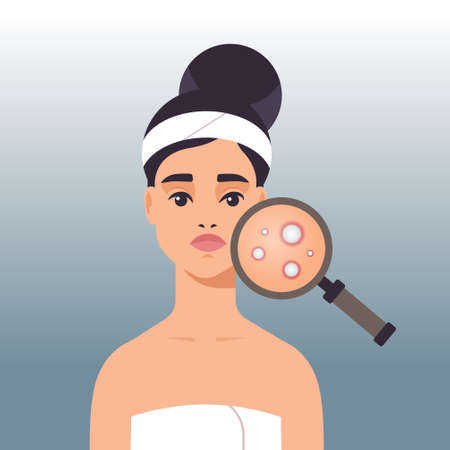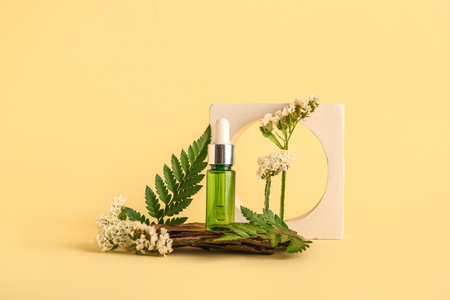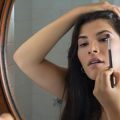Understanding Acne-Prone Skin
To effectively manage and treat acne-prone skin using safe and natural DIY remedies, it is essential first to understand what causes acne, the different types of acne, and the common triggers that may worsen this condition. Acne occurs when hair follicles become clogged with oil, dead skin cells, and bacteria, leading to inflammation and breakouts. While genetics play a significant role in determining whether someone has acne-prone skin, external factors such as diet, stress, hormonal changes, and improper skincare can also contribute.
Main Causes of Acne
| Cause | Description |
|---|---|
| Excess Sebum Production | Overactive oil glands can clog pores and attract bacteria. |
| Buildup of Dead Skin Cells | Dead skin cells that are not properly shed can block pores. |
| Bacterial Growth | P. acnes bacteria thrive in blocked pores, leading to inflammation. |
| Hormonal Fluctuations | Hormones during puberty, menstruation, or stress can increase oil production. |
Types of Acne Lesions
| Type | Characteristics |
|---|---|
| Whiteheads | Closed comedones with a white surface, caused by trapped sebum and skin cells. |
| Blackheads | Open comedones; oxidized sebum gives them a dark appearance. |
| Papules & Pustules | Small red bumps (papules) or bumps with pus (pustules) due to inflammation. |
| Cysts & Nodules | Larger, painful lumps beneath the skins surface; often require professional care. |
Common Triggers in American Lifestyles
- Diets high in processed foods or sugars may increase breakouts.
- Stress from work or school can spike hormone levels linked to acne flare-ups.
- Frequent use of heavy makeup or non-comedogenic products may block pores if not removed properly.
By recognizing your unique acne triggers—whether they stem from lifestyle choices, environmental factors, or genetics—you can better select safe and effective natural remedies tailored to your needs. The following sections will guide you through practical tips and homemade solutions designed specifically for sensitive, acne-prone skin while respecting common American habits and preferences.
Benefits of Natural Ingredients
Natural remedies for acne-prone skin have become increasingly popular among Americans seeking safe and effective solutions. The appeal largely lies in the use of plant-based and naturally derived ingredients that are gentle on the skin, reducing the risk of irritation and side effects often associated with synthetic chemicals. Many people find that natural alternatives align better with a holistic lifestyle, offering a sense of control over what they put on their bodies and contributing to overall well-being.
Why Choose Natural Remedies?
- Safety: Most natural ingredients are free from harsh additives and artificial fragrances, minimizing the likelihood of allergic reactions or skin flare-ups.
- Minimal Irritation: Gentle botanicals like aloe vera, chamomile, and honey soothe inflammation and calm redness without stripping the skin’s protective barrier.
- Eco-Friendliness: Using natural DIY remedies supports environmentally conscious living by reducing reliance on plastic-packaged products and toxic waste.
Comparison: Natural vs. Conventional Acne Treatments
| Treatment Type | Main Benefits | Potential Drawbacks |
|---|---|---|
| Natural Remedies | Cruelty-free, less irritating, biodegradable | May require longer for visible results |
| Chemical Treatments | Fast-acting, widely available | Risk of dryness, irritation, environmental impact |
The Takeaway for Acne-Prone Skin
Choosing natural ingredients isn’t just about avoiding harsh chemicals; it’s also about embracing a gentle, sustainable approach to skincare. For those with sensitive or acne-prone skin in the U.S., these benefits make DIY natural remedies an attractive option for everyday care.

3. Top DIY Remedies You Can Try at Home
If you’re looking for easy, safe, and effective ways to manage acne-prone skin, there are several DIY remedies using natural ingredients you probably already have in your kitchen or bathroom cabinet. These time-tested treatments are not only affordable but also gentle on sensitive skin. Here’s a look at some of the best options:
Honey: Nature’s Antibacterial Healer
Raw honey is packed with natural antibacterial properties and antioxidants that can help calm inflamed skin and fight acne-causing bacteria. Simply dab a small amount of raw, organic honey directly onto blemishes or use it as a soothing face mask.
How to Use:
- Apply a thin layer over clean skin.
- Leave on for 15-20 minutes.
- Rinse off with lukewarm water.
Aloe Vera: The Soothing Moisturizer
Aloe vera gel is famous for its calming, anti-inflammatory benefits. It’s perfect for reducing redness and swelling associated with acne while keeping the skin hydrated without clogging pores.
How to Use:
- Scoop out fresh aloe vera gel from the leaf.
- Apply directly onto clean skin as a moisturizer or spot treatment.
Tea Tree Oil: Potent Spot Treatment
This essential oil is popular in the U.S. for its antimicrobial and anti-inflammatory effects. Tea tree oil can be diluted and used as a spot treatment to target stubborn pimples.
How to Use:
- Mix 1-2 drops of tea tree oil with 1 tablespoon of carrier oil (like jojoba or coconut).
- Dab gently onto affected areas using a cotton swab.
Caution:
Always dilute tea tree oil before applying to avoid irritation.
Oatmeal: Gentle Exfoliation & Relief
Oatmeal helps soothe irritated skin and gently exfoliates dead cells that can clog pores. It’s an excellent choice for those seeking a mild, non-abrasive scrub or mask.
How to Use:
- Mix ground oats with water or plain yogurt to form a paste.
- Apply as a mask for 10-15 minutes, then rinse off with warm water.
| Ingredient | Main Benefit | How Often to Use |
|---|---|---|
| Honey | Bacteria-fighting, soothing | 2-3 times/week |
| Aloe Vera | Calming, hydrating | Daily as needed |
| Tea Tree Oil | Pimple targeting, antimicrobial | 1-2 times/day (spot treatment) |
| Oatmeal | Mild exfoliation, relief from redness | 1-2 times/week |
The beauty of these DIY remedies is their simplicity and accessibility—perfect for busy Americans who want quick, effective solutions without harsh chemicals or expensive products. Always patch-test any new ingredient first and consult with your dermatologist if you have concerns about allergies or sensitivities.
4. How to Safely Incorporate DIY Treatments
Before you start using any natural remedy on acne-prone skin, it’s crucial to make safety your top priority. Even the most natural ingredients can cause irritation or allergic reactions if not used properly. Below, we’ll break down essential steps for safe application, from patch testing to mixing and avoiding common mistakes.
Patch Testing: Your First Line of Defense
Patch testing helps identify potential allergies or sensitivities before applying a new ingredient to your face. Here’s how to do it:
| Step | Description |
|---|---|
| 1. Prepare a small amount | Mix the DIY remedy as you would for facial use. |
| 2. Apply to test area | Dab a small amount on the inside of your forearm or behind your ear. |
| 3. Wait and observe | Leave it on for 24 hours, watching for redness, itching, or swelling. |
| 4. Check results | If there is no reaction, it’s generally safe to use on your face. |
Best Practices for Mixing DIY Remedies
- Use clean tools and containers: Always wash mixing bowls, spoons, and storage jars with hot soapy water before use to prevent bacterial contamination.
- Measure ingredients accurately: Stick to the recommended ratios in your recipe. Too much of even a natural ingredient like tea tree oil can cause skin irritation.
- Avoid cross-contamination: Don’t double-dip fingers or tools into your mixtures. Use a clean spatula or spoon each time.
- Label and date your mixtures: Write the date and contents on each container to keep track of freshness.
Common Mistakes to Avoid When Using Natural Remedies
- Skipping patch tests: Even if you’ve used an ingredient before, formulations change and sensitivities can develop over time.
- Overusing treatments: More isn’t always better. Overuse can lead to dryness, increased oil production, or irritation—especially with potent ingredients like apple cider vinegar or lemon juice.
- Irritating combinations: Some natural ingredients don’t play well together (e.g., baking soda with acidic substances) and may disrupt your skin’s pH balance.
- Ignoring expiration dates: Freshness matters—homemade remedies lack preservatives, so discard mixtures after one week unless otherwise stated in the recipe.
Your DIY Skincare Safety Checklist
- Always do a patch test first
- Mix and store remedies in sanitized containers
- Avoid harsh combinations and overuse
- Toss out expired products promptly
- If irritation occurs, discontinue use immediately and consult a dermatologist if needed
The Bottom Line
Caring for acne-prone skin with DIY natural remedies is possible—and rewarding—when you prioritize safety at every step. With proper testing, clean preparation, and awareness of common pitfalls, you’ll be able to enjoy gentle, effective results without unnecessary risks.
5. When to Seek Professional Help
While DIY natural remedies can be safe and effective for many people with mild acne, there are certain situations where it’s important to consult a dermatologist. Recognizing the red flags early on can help prevent long-term skin damage and more serious health concerns. Below is a helpful guide to determine when professional help is needed:
| Red Flag | Description | Recommended Action |
|---|---|---|
| Severe or Painful Breakouts | Deep cysts, nodules, or widespread inflammation that do not respond to home remedies. | Schedule an appointment with a board-certified dermatologist. |
| Persistent Acne | No improvement after 8-12 weeks of consistent at-home care. | Seek a professional evaluation for prescription options. |
| Signs of Infection | Pus, excessive redness, swelling, fever, or pain around pimples. | Contact a healthcare provider immediately; antibiotics may be necessary. |
| Scarring or Hyperpigmentation | Noticeable dark spots or scars developing as acne heals. | Ask a dermatologist about treatments to minimize permanent marks. |
Why See a Dermatologist?
Dermatologists have access to advanced treatments such as topical retinoids, oral medications, and in-office procedures that can target stubborn or severe acne. They can also diagnose underlying conditions that may be contributing to persistent breakouts, such as hormonal imbalances or allergies.
What to Expect During Your Visit
- A comprehensive skin assessment
- A discussion about your skincare routine and lifestyle factors
- Personalized treatment recommendations tailored to your skin type and needs
Takeaway
If your acne is causing emotional distress, affecting your self-esteem, or interfering with daily life, don’t hesitate to seek professional help. Early intervention can make a significant difference in your skin’s health and appearance.
6. Lifestyle and Dietary Tips for Clearer Skin
While natural DIY remedies can make a big difference in managing acne, your lifestyle choices play an equally important role in supporting clear, healthy skin. By paying attention to your daily habits, diet, and stress levels, you can set the stage for long-term skin wellness.
Smart Dietary Choices
What you eat directly impacts your skin’s health. Certain foods may trigger or worsen breakouts, while others provide essential nutrients to help fight inflammation and promote healing. Here’s a quick guide:
| Foods to Enjoy | Foods to Limit |
|---|---|
| Fresh fruits (berries, oranges) | Sugary snacks & sodas |
| Leafy greens (spinach, kale) | Fried & greasy foods |
| Nuts & seeds (almonds, chia seeds) | Dairy (especially skim milk) |
| Whole grains (quinoa, brown rice) | Highly processed foods |
| Lean proteins (chicken, tofu) | Fast food meals |
Pro Tip:
Stay hydrated by drinking plenty of water throughout the day—aim for at least 8 cups daily to flush out toxins and keep your skin supple.
Stress Management for Healthy Skin
Chronic stress increases cortisol levels, which can trigger excess oil production and inflammation. Incorporate these stress-busting habits into your routine:
- Meditation or Mindfulness: Even 5-10 minutes daily can lower stress hormones.
- Physical Activity: Try yoga, jogging, or dancing to release endorphins and improve circulation.
- Sufficient Sleep: Aim for 7-9 hours each night—your skin repairs itself while you rest.
- Connect with Others: Spend time with friends or family to boost emotional wellbeing.
Healthy Habits for Acne-Prone Skin
Beyond what you put on your face, your everyday routines matter. Follow these simple tips:
- Avoid Touching Your Face: Hands transfer dirt and bacteria that can clog pores.
- Launder Pillowcases Weekly: Oils and sweat accumulate overnight—clean bedding helps prevent breakouts.
- Clean Your Phone Screen: Wipe down your phone regularly; it’s often pressed against your cheek and jawline.
- Choose Non-Comedogenic Products: Opt for skincare and makeup labeled “non-comedogenic” to avoid pore blockage.
- Avoid Over-Washing: Gentle cleansing twice a day is enough; over-cleansing strips the skin of its protective oils.
Your Holistic Approach Matters
Tackling acne-prone skin requires more than topical solutions. By embracing a balanced diet, reducing stress, and practicing healthy habits every day, you empower yourself for clearer skin from the inside out. Remember: consistency is key—small changes add up over time!


